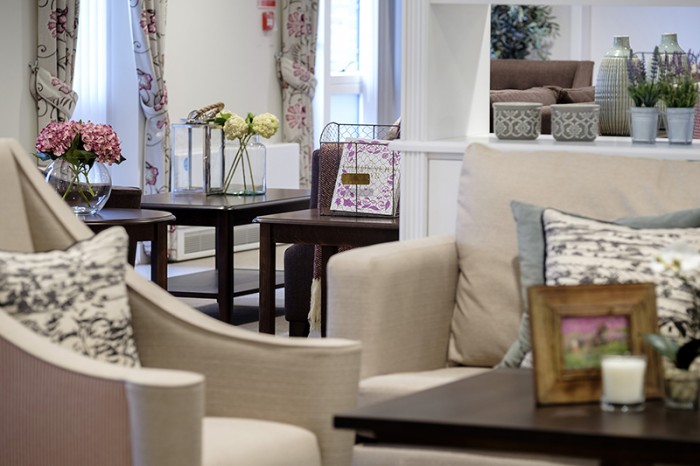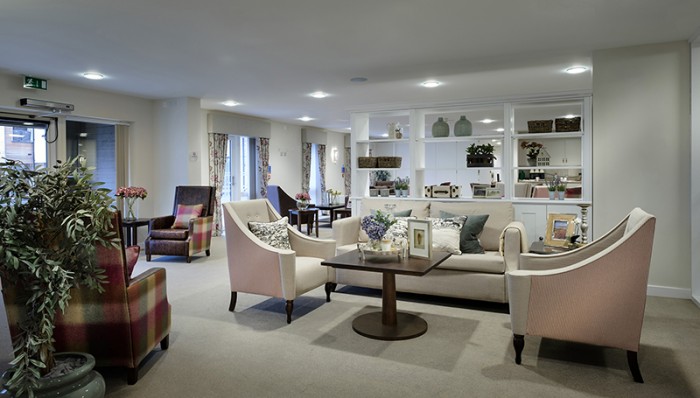Retirement Living in the 21st Century
The number of over 65s in the UK is forecasted to rise by 22% by 2025 to 14.3 million people. This translates into one in five of the total population being over 65, which will become one in four by 2050.
We caught up with JLL, a financial and professional services provider specialising in commercial real estate services and investment management to discuss retirement living. “There are two main retirement housing options in the UK, Housing with Support and Housing with Care. The former became popular in the 1980s, whilst the latter is now the fastest growing part of retirement housing and better suited to the long-term care needs of retirees” explains Anthony Oldfield, JLL Director of Healthcare Alternatives.
The current 55-65 age group, or the Baby Boom generation has benefited from inflation like no other generation in history, with house price growth of over 4,300% since 1970. JLL estimate that over 65s currently own a total of £800 billion of housing equity, which when combined with pension wealth provides a huge capital pool for retirement. They are not only wealthier, they are also better travelled, better educated and healthier than previous generations. With a desire to maintain their pre-retirement lifestyle, it’s no surprise that Baby Boomers have very different expectation of retirement accommodation.

JLL forecasts that approximately 190,000 additional Housing with Care units will be required by 2025 to keep up with the rising older population. The majority will need to target those in the mid and high-end specification of the market to match the future wealth profile of the over 65s.
Philip Schmid, JLL Director of Healthcare Investment Alternatives confirms, “We are witnessing many existing developers and operators adapting to this change in mind-set from their customers, with a greater emphasis on building larger, better specified properties that are aspirational and with a variety of on-site facilities.” However, there is currently an imbalance between the supply of retirement accommodation aimed at wealthier older people. Utilising the latest ONS wealth report, JLL calculate that 75% of over 65s fall into the mid to high-end of the wealth spectrum, however only 25% of the current supply of Housing with Care is aimed at this sector. This chronic undersupply has resulted in retirement apartments being fully sold off-plan, and long waiting lists for existing schemes.
Just Imagine Contract Interiors, a leading interior design, procurement, and installation company in the healthcare has seen the retirement apartment sector become a dominant part of their commissions, accounting for over 70% of their projects over the last twelve months.
Responsible for Project Management and Design at Just Imagine Contracts, Denzil Hughes explains why, “Clients are becoming more design aware, which is great for us at Just Imagine, always wanting to explore new concepts we are developing. Projects are very much design led, as clients and residents want stand-out interiors.”
Saxon Weald’s Highwood Mill development in Horsham, is a good example of what the over 55s are seeking, offering 105 high-quality one and two bedroom apartments, and a host of onsite facilities.
“Themes and destinations are very much on trend”, explains Denzil, “Residents are not just looking for a hairdresser’s but desire a multi treatment beauty salon. Stylish apartments complete with fitted kitchens and pamper bathrooms are set in beautiful surroundings. Designing on-site cinema, private dining, sumptuous lounges and even library facilities are paramount in creating the lifestyle experience.”

Diana Celella, Managing Director of The Drawing Room Interiors and Chairman SBID Healthcare Design Advisory Council sees retirement living as a expanding commercial sector. “The retirement sector is one of the areas of design with most growth, but it is an area were designers need to have comprehensive knowledge of EBD (evidence based design) to design in an appropriate manner. By designing in a way that is appropriate for the elderly we can help to keep residents more independent for longer with less accidents.”
Also predicting the greatest growth will be in the high-end retirement apartment sector, which demands design-led furniture and fittings. “Manufactures who have recognised that designers want products which not only meet the regulations and best practice for the elderly, but are also elegant are doing better. Potential residents are looking for aspirational interiors, they are usually downsizing and therefore the communal spaces become more important. They are giving up their home, which they could have lived in for many years, so they need to feel proud, comfortable and at home in their new environment.” she explains.

Diana worked on creating an aspiration feel at Wellesley Court, a MHA development of 48 one or two bedroom apartments. Complete with a top-floor lounge with its own bar and roof terrace.
Interior design is vital to make the clients project stand out as a desirable place to live. It’s clear that designers who specialise in retirement living, design in an age appropriate way, for example chairs which are easier to get out of, use of similar LRV values on flooring, space planning to allow for walkers, to create stylish yet function spaces.
We should note that good interior design is not exclusive to the mid to high-end sector. So, we will be sharing some great case studies of a mix of social funded senior living accommodation during this month.




